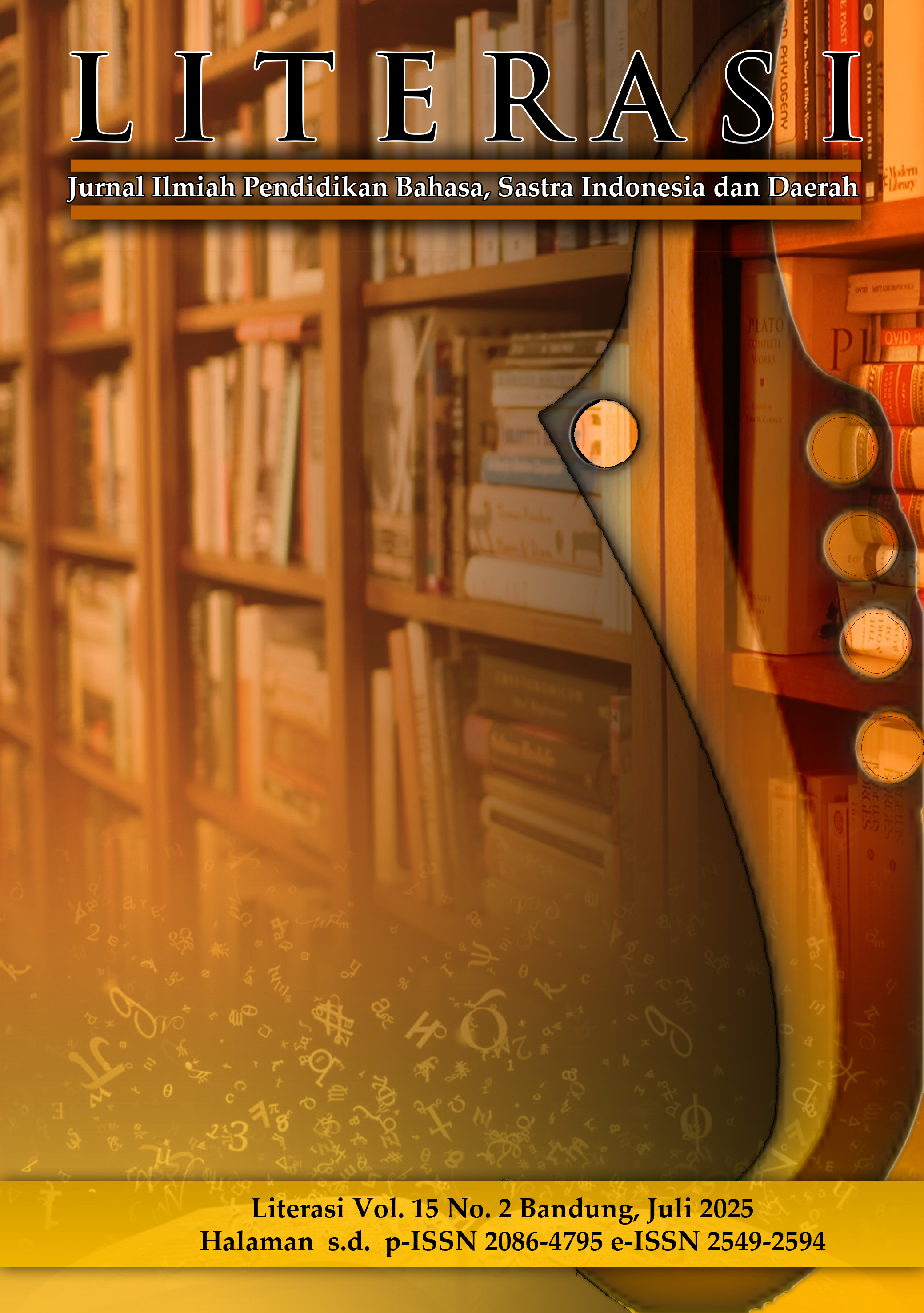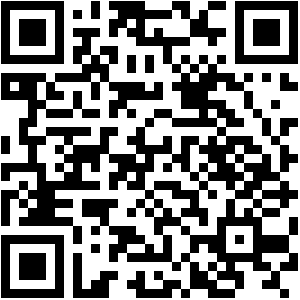TREN DAN PELUANG PENELITIAN BERBASIS SENI DALAM KAJIAN CERITA RAKYAT UNTUK BAHAN PEMBELAJARAN BAHASA DAN SASTRA: VISUALISASI DAN ANALISIS BIBLIOMETRIK
DOI:
https://doi.org/10.23969/literasi.v15i2.28645Keywords:
bibliometrik, cerita rakyat, pembelajaran sastra, Penelitian Berbasis SeniAbstract
Penelitian ini bertujuan untuk menganalisis peluang penerapan Penelitian Berbasis Seni (ABR) dalam kajian cerita rakyat. Penelitian ini menggunakan metode analisis bibliometrik dan analisis visual mapping menggunakan VOSviewer. Sumber data diambil dari basis data Scopus tahun 2019-2023. Total artikel yang ditemukan sebanyak 590. Hasil penelitian menunjukkan bahwa perkembangan Penelitian Berbasis Seni secara umum masih mengalami pasang surut. Pada tahun 2019 hingga 2020, penelitian berbasis seni meningkat dari 95 menjadi 117 dokumen; pada tahun 2020 hingga 2021 menurun dari 117 menjadi 111; pada tahun 2021 hingga 2022 meningkat dari 111 menjadi 142; dan pada tahun 2022 hingga 2023 kembali menurun dari 142 menjadi 125. Berdasarkan analisis tersebut, dapat disimpulkan bahwa tren Penelitian Berbasis Seni dari tahun ke tahun tidak stabil. Namun, jika dilihat secara keseluruhan dalam 5 tahun terakhir, jumlahnya cukup banyak. Artinya, penelitian ini bukanlah hal baru, tetapi masih sangat sedikit kaitannya dengan penerapannya pada kajian sastra dan bahkan belum ditemukan dalam penelitian cerita rakyat. Inilah yang menjadi temuan dan kebaruan penelitian ini. Dengan demikian, Penelitian Berbasis Seni masih sangat terbuka dalam kajian sastra maupun kajian cerita rakyat.
Downloads
References
Abdulah, D. M., Abdulla, B. M. O., & Liamputtong, P. (2021). Psychological response of children to home confinement during COVID-19: A qualitative arts-based research. International journal of social psychiatry, 67(6), 761-769. https://doi.org/10.1177/0020764020972439
Al Husaeni, DF, dan Munir, M. (2023). Tinjauan Pustaka dan Analisis Pemetaan Bibliometrik: Filsafat Pendidikan Sains dan Teknologi. Jurnal Penelitian Multidisiplin Indonesia , 3 (2), 219-234 https://doi.org/10.47213/bp.v4i2.101
Archibald, M., & Blines, J. (2021). Metaphors in the Making: Illuminating the Process of Arts-Based Health Research Through a Case Exemplar Linking Arts-Based, Qualitative and Quantitative Research Data. International Journal of Qualitative Methods, 20. https://doi.org/10.1177/1609406920987954
Blaisdell, C., Arnott, L., Wall, K., & Robinson, C. (2019). Look who’s talking: Using creative, playful arts-based methods in research with young children. Journal of Early Childhood Research, 17(1), 14-31. https://doi.org/10.1177/1476718X18808816
Brown, N. (2019). Identity boxes: Using materials and metaphors to elicit experiences. International Journal of Social Research Methodology, 22(5), 487-501. https://doi.org/10.1080/13645579.2019.1590894
Brown, N. (2022). Scope and continuum of participatory research. International Journal of Research & Method in Education, 45(2), 200-211. https://doi.org/10.1080/1743727X.2021.1902980
Casazza, M., & Gioppo, L. (2020). A playwriting technique to engage on a shared reflective enquiry about the social sustainability of robotization and artificial intelligence. Journal of cleaner production, 248, 119201. https://doi.org/10.1016/j.jclepro.2019.119201
Chang, Y. C. (2020). Creating value through the performing arts festival: The multi-stakeholder approach. Journal of Macromarketing, 40(2), 185-200. https://doi.org/10.1177/0276146719894627
Changfoot, N., Rice, C., Chivers, S., Williams, A. O., Connors, A., Barrett, A., Gordon, M., & Lalonde, G. (2022). Revisioning aging: Indigenous, crip and queer renderings. Journal of aging studies, 63, 100930. https://doi.org/10.1016/j.jaging.2021.100930
Coles, A., Harrison, F., & Todd, S. (2019). Flexing the frame: Therapist experiences of museum-based group art psychotherapy for adults with complex mental health difficulties. International Journal of Art Therapy, 24(2), 56-67. https://doi.org/10.1080/17454832.2018.1564346
Cologon, K., Cologon, T., Mevawalla, Z., & Niland, A. (2019). Generative listening: Using arts-based inquiry to investigate young children’s perspectives of inclusion, exclusion and disability. Journal of Early Childhood Research, 17(1), 54-69. https://doi.org/10.1177/1476718X18818206
El-Wakeel, H. A., Abdellatif, R., Eldardiry, D. H., Al-Saleh, D. F., Shukri, M. I., & Ansari, K. M. N. (2023). Brain-based learning in design and visual arts education: a bibliometric assessment of Scopus indexed literature. F1000Research, 11, 402. https://doi.org/10.12688/f1000research.110294.3
Fairchild, R., & McFerran, K. S. (2019). “Music is everything”: Using collaborative group songwriting as an arts-based method with children experiencing homelessness and family violence. Nordic Journal of Music Therapy, 28(2), 88-107. https://doi.org/10.1080/08098131.2018.1509106
Ferreira, F. A. (2018). Mapping the field of arts-based management: Bibliographic coupling and co-citation analyses. Journal of Business Research, 85, 348-357. https://doi.org/10.1016/j.jbusres.2017.03.026
Fish, J., & Syed, M. (2021). Digital storytelling methodologies: Recommendations for a participatory approach to engaging underrepresented communities in counseling psychology research. Journal of Counseling Psychology, 68(3), 271–285. https://doi.org/10.1037/cou0000532
Khanolainen, D., & Semenova, E. (2020). School bullying through graphic vignettes: Developing a new arts-based method to study a sensitive topic. International Journal of Qualitative Methods, 19. https://doi.org/10.1177/1609406920922765
Lang, M., Laing, C., Moules, N., & Estefan, A. (2019). Words, camera, music, action: A methodology of digital storytelling in a health care setting. International Journal of Qualitative Methods, 18. https://doi.org/10.1177/1609406919863241
Leavy, P. (2020). Method meets art: Arts-based research practice. Guilford publications.
Lindström Sol, S., Gustrén, C., Nelhans, G., Eklund, J., Johannisson, J., & Blomgren, R. (2022). Mapping research on the social impact of the arts: what characterises the field?. Open Research Europe, 1(124). https://doi.org/10.12688/openreseurope.14147.2
MacDonald, A., & Hunter, M. (2018). Arts-based research in education: Becomings from a doctoral research perspective. Structuring the Thesis: Matching Method, Paradigm, Theories and Findings, 251-261.
McKay, L., & Sappa, V. (2020). Harnessing creativity through arts-based research to support teachers’ identity development. Journal of adult and continuing education, 26(1), 25-42. https://doi.org/10.1177/1477971419841068
Nandiyanto, ABD, Ragadhita, R., Al Husaeni, DN, dan Nugraha, WC (2023). Tren penelitian penggunaan merkuri di pertambangan emas: Tinjauan literatur dan analisis bibliometrik. Jurnal Kimia Maroko , 11 (1), 11-1.
Nash, G. (2020). Response art in art therapy practice and research with a focus on reflect piece imagery. International Journal of Art Therapy, 25(1), 39-48. https://doi.org/10.1080/17454832.2019.1697307
Rousell, D. (2019). Inhuman forms of life: On art as a problem for post-qualitative research. International Journal of Qualitative Studies in Education, 32(7), 887-908. https://doi.org/10.1080/09518398.2019.1609123
Smith, L., & Phillipson, L. (2021). Thinking through participatory action research with people with late-stage dementia: Research note on mistakes, creative methods and partnerships. International Journal of Social Research Methodology, 24(6), 775-780. https://doi.org/10.1080/13645579.2020.1810997
Sumiyadi, S., Sitaresmi, N., Durachman, M., & Kusumah, E. (2024, February). A New Direction in the Studies of Comparative Literature. In 7th International Conference on Language, Literature, Culture, and Education (ICOLLITE 2023) (pp. 448-453). Atlantis Press. https://doi.org/10.2991/978-94-6463-376-4_59
Wenham, A. (2020). “Wish you were here”? Geographies of exclusion: Young people, coastal towns and marginality. Journal of Youth Studies, 23(1), 44-60. https://doi.org/10.1080/13676261.2019.1704408
Woodgate, R. L., Tennent, P., & Legras, N. (2021). Understanding youth’s lived experience of anxiety through metaphors: A qualitative, arts-based study. International journal of environmental research and public health, 18(8), 4315. https://doi.org/10.3390/ijerph18084315
Youpika, F., Sumiyadi, S., Permadi, T., Sunendar, D., & Yandryati, J. (2024). The Endangered Central Malay Folklore: A Medium for Internalizing Character Values in Indonesian Language and Literature. International Journal of Language Education, 8(1), 48-62. https://doi.org/10.26858/ijole.v8i1.60908Penelitian Universitas Negeri Surabaya.
Wahab, Abdul dan Lestari, Lies Amin. 1999. Menulis Karya Ilmiah. Surabaya: Airlangga University Press.
Winardi, Gunawan. 2002. Panduan Mempersiapkan Tulisan Ilmiah. Bandung: Akatiga.
Downloads
Published
Issue
Section
License
Copyright (c) 2025 Literasi: Jurnal Ilmiah Pendidikan Bahasa, Sastra Indonesia dan Daerah

This work is licensed under a Creative Commons Attribution 4.0 International License.
Hak cipta artikel yang diterbitkan di jurnal ilmiah dimiliki oleh penerbit, bukan penulis. Hal ini berkaitan dengan koordinasi hak akses untuk cetak ulang atau penggunaan lainnya. Dalam hal ini penerbit mempunyai keluluasaan untuk mempublikasikan artikel sesuai dengan kesepakanan Transfer Agreement (penyerahan hak cipta) antara penerbit dengan penulis.















